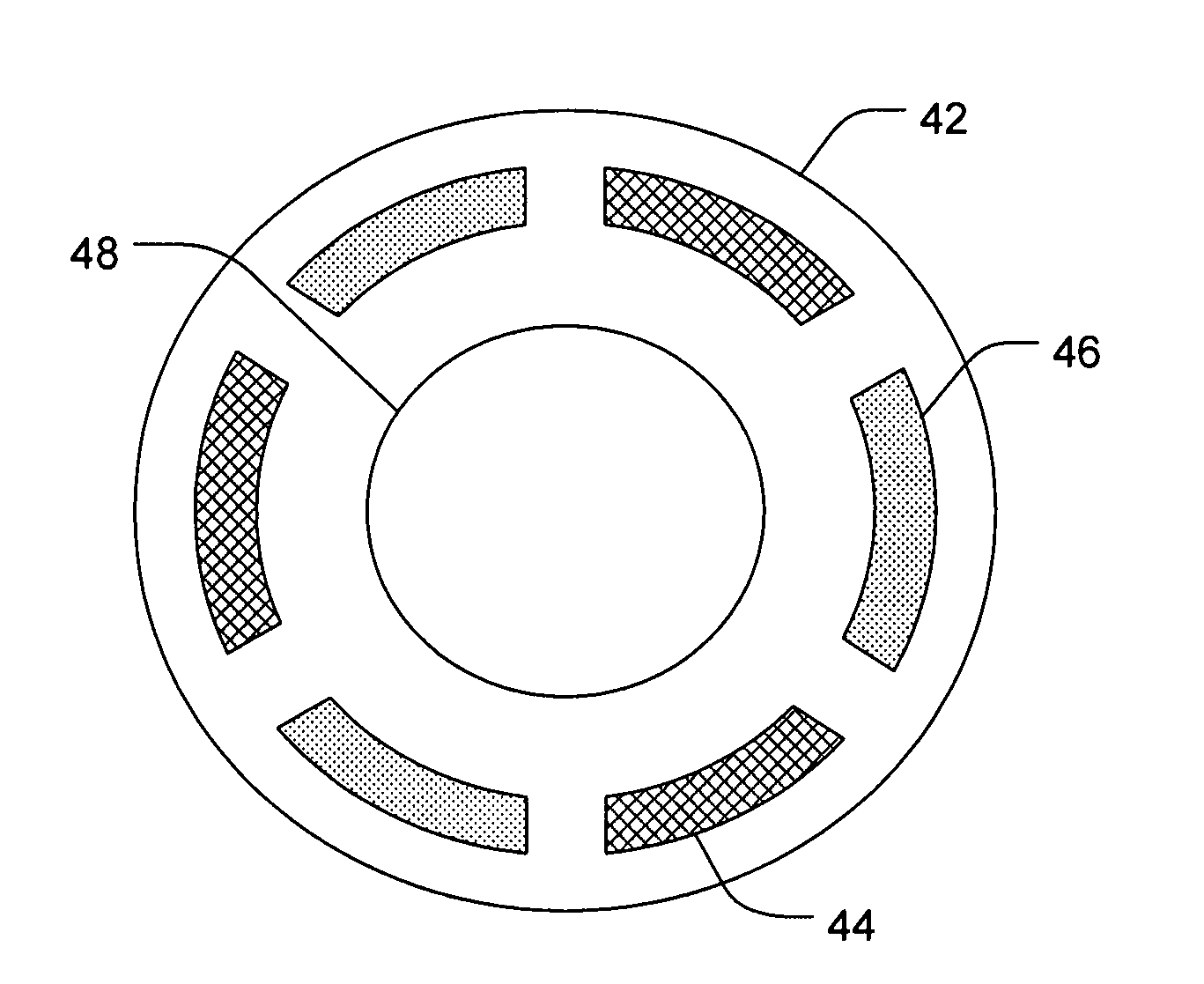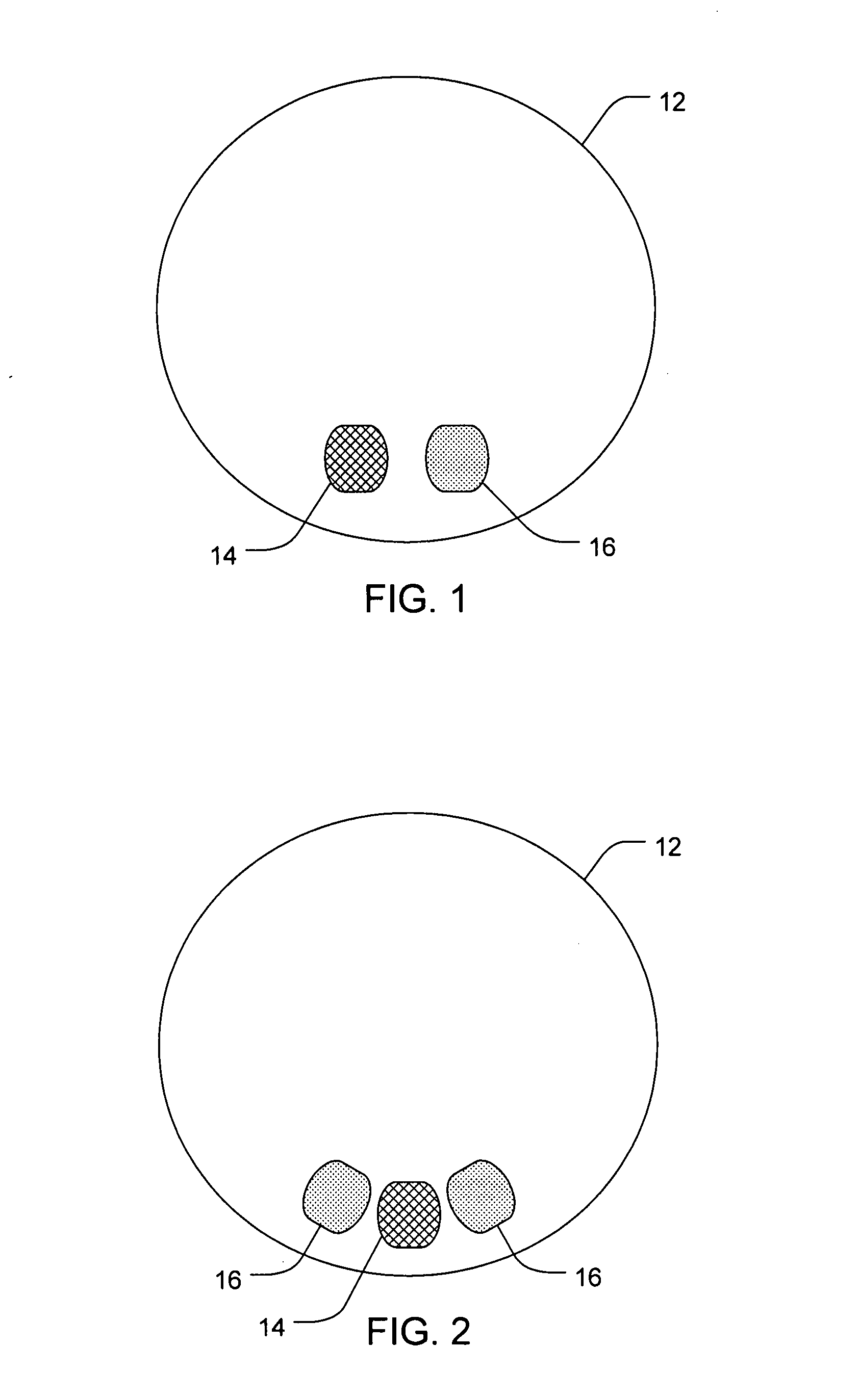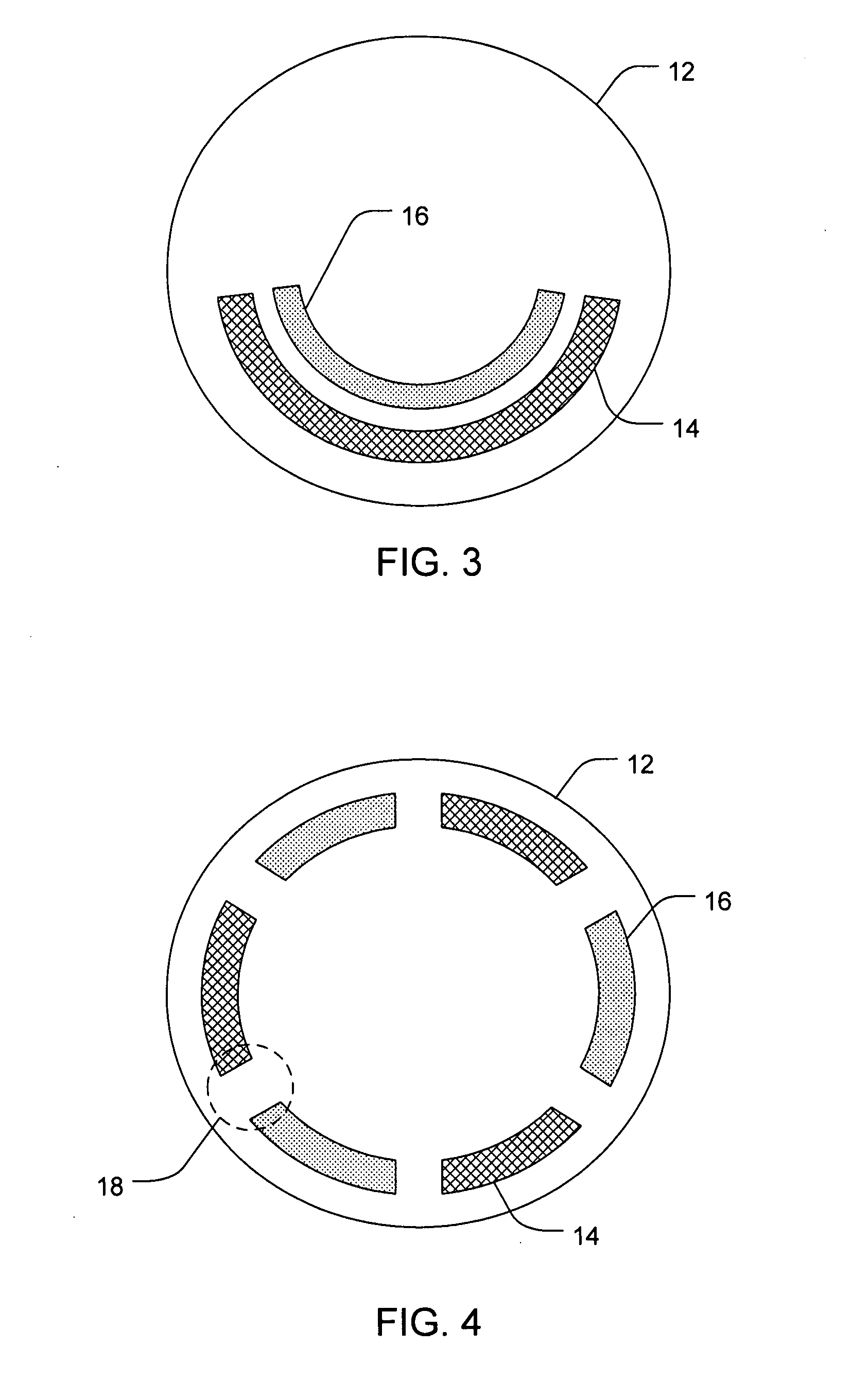Passive intraocular drug delivery devices and associated methods
- Summary
- Abstract
- Description
- Claims
- Application Information
AI Technical Summary
Benefits of technology
Problems solved by technology
Method used
Image
Examples
example 1
[0088]A 100 microliter / 30 G needle Hamilton syringe is used to administer a sub conjunctiva injection (n=2) of 20 microliters of 0.1M DSP at pH 7 into an eye of a New Zealand White Rabbit. The initial dose of DSP is 1.04 mg. After 4 hours from the time of the injection, the rabbit is euthanized and the eye is dissected and analyzed for the presence of DSP. The process is repeated for a total of 2 trials. The results are summarized in Table 1. About 23 micrograms of the approximate 1.04 mg subconjunctival injection of DSP are recovered from the whole eye after 4 hours. This illustrates the clearance effects of the transscleral pathway; in this case about 97.8 percent of the drug cleared the eye within four hours.
example 2
[0089]A six chambered annular lens-shaped housing is used to passively administer dexamethasone sodium phosphate (DSP) into the eye for immediate release. Chambers 1, 3, and 5 each contain a 2 mm Avalon Sponge hydrated with 25 μl of hydrogel and are further loaded with 6.47 mgs of 0.5 M DSP at pH 7 in each chamber. The housing is coupled to an eye of a New Zealand White Rabbit and depressurized with 0.2 cc of suction. The housing is maintained on the eye for 20 minutes. After 4 hours from the time the housing was applied to the eye, the rabbit is euthanized and the eye is dissected and analyzed for the presence of DSP. The process is repeated for a total of 4 trials. The results are summarized in Table 1.
example 3
[0090]A six chambered annular lens-shaped housing is used to passively administer DSP and a depot forming agent into the eye for sustained release. Each chamber of the housing contains a 2 mm Avalon Sponge hydrated with 25 μl of hydrogel. Chambers 1, 3, and 5 are further loaded with 6.47 mgs of 0.5 M dexamethasone sodium phosphate (DSP) at pH 7 in each chamber. Chambers 2, 4, and 6 are further loaded with 1.0 M CaCl2. The housing is coupled to an eye of a New Zealand White Rabbit and depressurized with 0.2 cc of suction. The housing is maintained on the eye for 20 minutes. After 4 hours from the time the housing was applied to the eye, the rabbit is euthanized and the eye is dissected and analyzed for the presence of DSP. The process is repeated for a total of 4 trials. The results are summarized in Table 1.
TABLE 1Example 3Example 1Example 2DSP-CaCl2DSP Total DrugDSP Total DrugTotal Drug(micrograms)(micrograms)(micrograms)Sclera10.8 ± 7.74.3 ± 1.046.7 ± 23.5Retina / Choroid 0.8 ± 0.21...
PUM
 Login to View More
Login to View More Abstract
Description
Claims
Application Information
 Login to View More
Login to View More - R&D
- Intellectual Property
- Life Sciences
- Materials
- Tech Scout
- Unparalleled Data Quality
- Higher Quality Content
- 60% Fewer Hallucinations
Browse by: Latest US Patents, China's latest patents, Technical Efficacy Thesaurus, Application Domain, Technology Topic, Popular Technical Reports.
© 2025 PatSnap. All rights reserved.Legal|Privacy policy|Modern Slavery Act Transparency Statement|Sitemap|About US| Contact US: help@patsnap.com



